Publications
Group highlights
At the end of this page, you can find the full list of publications. All papers are also available online
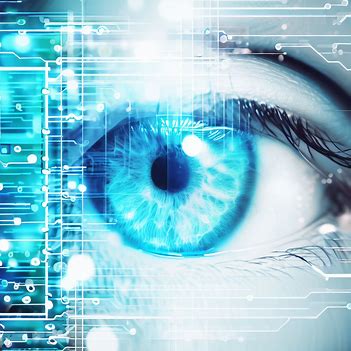
It contains 15 refereed research papers on recent developments in optimization algorithms (OAs) and machine learning (ML). There is a particular focus on applications of OA and ML in the medical image analysis fields.
Yudong Zhang, Juan Manuel Gorriz, Deepak Ranjan Nayak
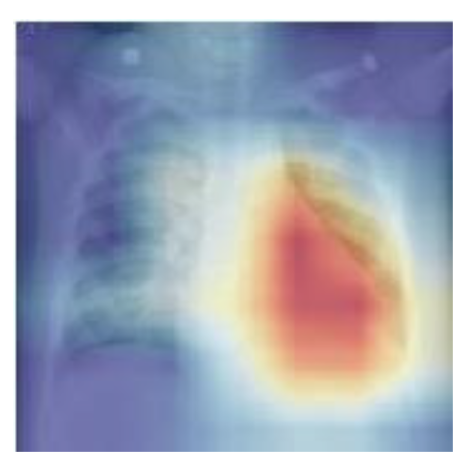
In this paper, a lightweight CNN model called LW-CORONet is proposed that comprises a sequence of convolution, rectified linear unit (ReLU), and pooling layers followed by two fully connected layers. The proposed model facilitates extracting meaningful features from the chest X-ray (CXR) images with only five learnable layers.
Soumya Ranjan Nayak, Deepak Ranjan Nayak, Utkarsh Sinha, Vaibhav Arora and Ram Bilas Pachori
Diagnosis on chest imaging (2022)
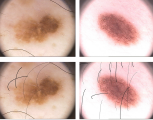
we propose an automated method for melanoma detection from dermoscopic images using high-level features derived from an effective CNN architecture. The proposed method first preprocesses the images using boundary localization and cropping to generate images containing only essential parts, i.e., lesion regions
Himanshu K. Gajera, Mukesh A. Zaveri, Deepak Ranjan Nayak
OITS International conference on information technology (2022)
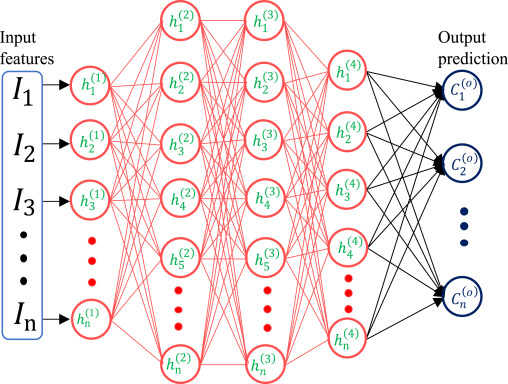
we present an automated framework that extracts visual features from dermoscopy images using a pre-trained deep CNN model and then employs a set of classifiers to detect melanoma
H. K. Gajera, D. R. Nayak, M. A. Zaveri
Biomedical Signal Processing and Control (2023)

we propose an extremely lightweight CNN with multi-scale feature learning blocks called as MFL-Net. The MFL-Net comprises a sequence of MFL blocks that combines multiple convolutional layers with 3×3 filters and residual connections effectively, thereby extracting multi-scale features at different levels and preserving them throughout the block.
A. Joshi, D. R. Nayak
IEEE Journal of biomedical and health informatics(2022)

In the proposed method, the features are extracted from different patches of a dermoscopy image using a pre-trained CNN model and are fused to preserve fine details. The kernel principal component analysis is then employed to select the prominent features, and a feed-forward neural network is finally used to detect skin cancer.
H. K. Gajera, M. A. Zaveri, D. R. Nayak
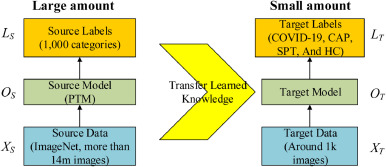
We proposed a novel (L, 2) transfer feature learning (L2TFL) approach to elucidate the optimal layers to be removed prior to selection by testing various pretrained networks with various settings
S. Wang, D. R. Nayak, D. S. Guttery, X. Zhang, Y. Zhang

In this paper, a deep convolutional neural network (CNN) based automated approach is designed for the diagnosis of multi-class brain abnormalities. The proposed CNN model comprises five layers with learnable parameters four convolutional layers and one fully-connected layer. The objective of designing such a custom deep network is to achieve greater classification performance with reduced number of parameters
D. R. Nayak, R. Dash, B. Majhi
Pattern Recognition Letters(2020)
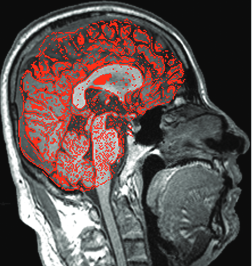
This study investigated the advantages and disadvantages of three classical machine learning methods multilayer perceptron (MLP), support vector machine (SVM), and least-square support vector machine (LS-SVM) approach and made a further optimization of the LS-SVM model via wavelet entropy.
C. Tang, D. R. Nayak, S. Wang
Computer modelling in engineering and sciences (2020)
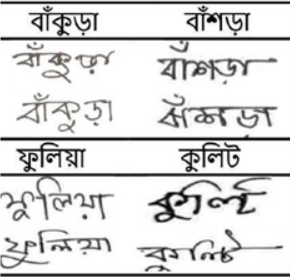
In this study, a deep convolutional neural network-based holistic method termed ‘H-WordNet’ is proposed for handwritten word recognition. The H-WordNet model includes merely four convolutional layers and one fully connected layer to effectively classify the word images’, which lead to a significant reduction in parameters
D. Das, D. R. Nayak, R. Dash, B. Majhi

D. Das, D. R. Nayak, R. Dash, B. Majhi
Multimedia Tools and Applications (2019)
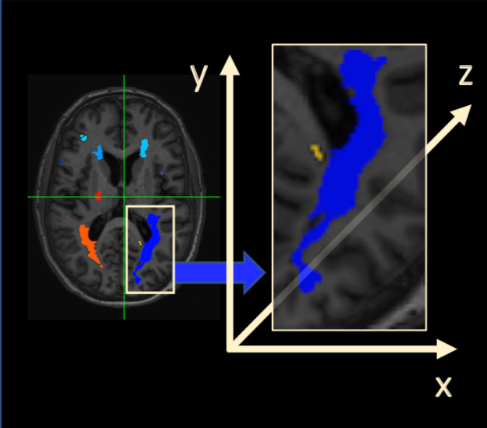
The proposed system involves contrast enhancement of input MR images using contrast limited adaptive histogram equalization (CLAHE). Then, the curve like features are computed from the preprocessed MR brain images using fast discrete curvelet transform via unequally-spaced FFT (FDCT-USFFT).
D. R. Nayak, R. Dash, B. Majhi, S. Wang
Computers & Electrical Engineering (2018)
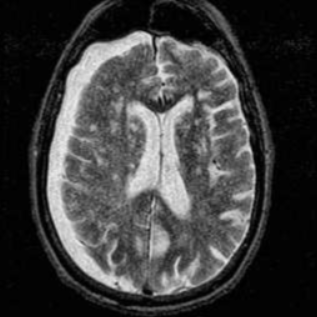
This paper aims at developing a new method for automated diagnosis of pathological brain using magnetic resonance imaging (MRI). The method derives features using unequally-spaced FFT based fast discrete curvelet transform (FDCT- USFFT). Thereafter, a reduced feature set is obtained using PCA+LDA algorithm.
D. R. Nayak, R. Dash, Z. Lu, S. Lu, B. Majhi
27th IEEE International Symposium on Robot and Human Interactive Communication (RO-MAN) (2018)

The proposed scheme uses a simplified pulse-coupled neural network (SPCNN) for the region of interest (ROI) segmentation and fast discrete curvelet transform (FDCT) for feature extraction. Subsequently, PCA+LDA approach is harnessed for feature dimensionality reduction and finally probabilistic neural network (PNN) is applied for classification
D. R. Nayak, R. Dash, B. Majhi, V. Prasad
Expert Systems with Applications (2017)
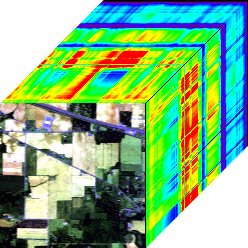
This paper proposes a new scheme for hyperspectral image classification through k-means clustering. The scheme includes three steps. The suggested method is compared with a standard technique, called PCA + M-SVM and it is observed that the proposed scheme gives better results in terms of classification accuracy and execution time.
S. Ranjan, D. R. Nayak, K. S. Kumar, R. Dash, B. Majhi
4th International Conference on Advanced Computing and Communication Systems (ICACCS)(2017)
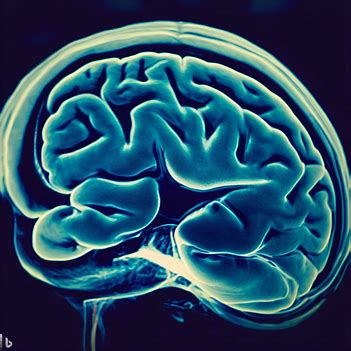
In this paper, a new automatic CAD system for brain magnetic resonance (MR) image classification is proposed. The method utilizes two-dimensional discrete wavelet transform to extract features from the MR images. The dimension of the features have been reduced using principal component analysis (PCA) and linear discriminant analysis (LDA), to obtain the more significant features
D. R. Nayak, R. Dash, B. Majhi

In this chapter, the authors compare the effectiveness of two feature extractors based on FCT and R2T along with different ELM algorithms. These schemes have been evaluated on three brain MR datasets and comparative analyses have been made on several combinations of methods.
D. R. Nayak, D. Das, R. Dash, B. Majhi
Handbook of research on advancements of AI in Healthcare Engineering (2020)
Full List of publications
Optimization Algorithms and Machine Learning Techniques in Medical Image Analysis
Yudong Zhang, Juan Manuel Gorriz, Deepak Ranjan Nayak
10.3934/mbe.2023255 (2023)
An Efficient Deep Learning Method for Detection of COVID-19 Infection Using Chest X-ray Images
Soumya Ranjan Nayak, Deepak Ranjan Nayak, Utkarsh Sinha, Vaibhav Arora and Ram Bilas Pachori
Diagnosis on chest imaging (2022)
Multi-level 3DCNN with Min-Max Ranking Loss for Weakly-Supervised Video Anomaly Detection
Snehashis Majhi, Deepak Ranjan Nayak, Ratnakar Dash & Pankaj Kumar Sa
Neural information processing (2023)
Towards Exploring Deep Features for Efficient Melanoma Diagnosis in Dermoscopic Images
Himanshu K. Gajera, Mukesh A. Zaveri, Deepak Ranjan Nayak
OITS International conference on information technology (2022)
A Comprehensive Analysis of Dermoscopy Images for Melanoma Detection via Deep CNN Features
H. K. Gajera, D. R. Nayak, M. A. Zaveri
Biomedical Signal Processing and Control (2023)
MFL-Net: An Efficient Lightweight Multi-Scale Feature Learning CNN for COVID-19 Diagnosis from CT Images
A. Joshi, D. R. Nayak
IEEE Journal of biomedical and health informatics(2022)
LiMS-Net: A Lightweight Multi-Scale CNN for COVID-19 Detection from Chest CT Scan
A. Joshi, D. R. Nayak, D. Das, Y. Zhang
ACM Journals (2022)
CDANet: Channel Split Dual Attention based CNN for Brain Tumor Classification in MR Images
T. K. Dutta, D. R. Nayak
ICIP (2022)
GDenseMNet: Global Dense Multiscale Feature Learning Network for Efficient COVID-19 Detection in CT Images
A. Joshi, D. R. Nayak
International Joint Conference on Neural Networks (2022)
Fusion of Local and Global Feature Representation with Sparse Autoencoder for Improved Melanoma Classification
H. K. Gajera, D. R. Nayak, M. A. Zaveri
Annu Int Conf IEEE Eng Med Biol Soc (2022)
Patch based Local Deep Feature Extraction for Automated Skin Cancer Classification
H. K. Gajera, M. A. Zaveri, D. R. Nayak
IJIST 2022
A Cerebral Microbleed Diagnosis Method via FeatureNet and Ensembled Randomized Neural Networks
S. Lu, D. R. Nayak, S. Wang, Y. Zhang
Applied Soft Computing (2021)
ECNet: An Evolutionary Convolutional Network for Automated Glaucoma Detection using Fundus Images
D. R. Nayak, D. Das, B. Majhi, S. V. Bhandary, U. R. Acharya
Biomedical Signal Processing and Control (2021)
A Feature-Level Fusion based Improved Multimodal Biometric Recognition System using Ear and Profile Face
P. P. Sarangi, D. R. Nayak, M. Panda, B. Majhi
Journal of Ambient Intelligence and Humanized Computing (2021)
COVID-19 Classification by CCSHNet with Deep Fusion using Transfer Learning and Discriminant Correlation Analysis
S. Wang, D. R. Nayak, D. S. Guttery, X. Zhang, Y. Zhang
Information Fusion (2021)
Feature Modulating Two-stream Deep Convolutional Neural Network for Glaucoma Detection in Fundus Images
S. Majhi, D. R. Nayak
International Conference on Computer Vision and Image Processing (2021)
Improving the Performance of Melanoma Detection in Dermoscopy Images using Deep CNN Features
H. K. Gajera, M. A. Zaveri, D. R. Nayak
AIME 2021
Application of Deep Learning Techniques for Detection of COVID-19 Cases using Chest X-ray Images: A Comprehensive Study
S. R. Nayak, D. R. Nayak, U. Sinha, V. Arora, R. B. Pachori
Biomed Signal Process Control (2021)
A Hybrid Feature Descriptor with Jaya Optimized Least Squares SVM for Facial Expression Recognition
N. B. Kar, D. R. Nayak, K. Babu, Y. Zhang
IET Image Processing (2020)
Diagnosis of Secondary Pulmonary Tuberculosis by an Eight-layer Improved Convolutional Neural Network with Data Augmentation and Stochastic Pooling
Y. Zhang, D. R. Nayak, X. Zhang, S. Wang
Journal of Ambient Intelligence and Humanized Computing
MJCN: Multi-Objective Jaya Convolutional Network for Handwritten Optical Character Recognition
D. Das, D. R. Nayak, R. Dash, B. Majhi
Multimedia Tools and Applications (2020)
Automated Diagnosis of Multi-class Brain Abnormalities using MRI Images: A Deep Convolutional Neural Network based Method
D. R. Nayak, R. Dash, B. Majhi
Pattern Recognition Letters(2020)
Least‐square Support Vector Machine and Wavelet Selection for Hearing Loss Identification
C. Tang, D. R. Nayak, S. Wang
Computer modelling in engineering and sciences (2020)
H-WordNet: A Holistic Convolutional Neural Network Approach for Handwritten Word Recognition
D. Das, D. R. Nayak, R. Dash, B. Majhi
IET Image Processing (2020)
A Deep Stacked Random Vector Functional Link Network Autoencoder for Diagnosis of Brain Abnormalities and Breast Cancer
D. R. Nayak, R. Dash, B. Majhi, R. B. Pachori, Y. Zhang
Biomedical Signal Processing and Control (2020)
Automated Diagnosis of Pathological Brain Using Fast Curvelet Entropy Features
D. R. Nayak, R. Dash, X. Chang, B. Majhi, S. Bakshi
IEEE Transactions on Sustainable Computing(2020)
A Hybrid Regularized Extreme Learning Machine for Automated Detection of Pathological Brain
D. R. Nayak, R. Dash, B. Majhi, Y. Zhang
Biocybernetics and Biomedical Engineering (2019)
Application of Fast Curvelet Tsallis Entropy and Kernel Random Vector Functional Link Network for Automated Detection of Multiclass Brain Abnormalities
D. R. Nayak, R. Dash, B. Majhi, U. R. Acharya
Computerized Medical Imaging and Graphics (2019)
MJaya-ELM: A Jaya Algorithm with Mutation and Extreme Learning Machine based Approach for Sensorineural Hearing Loss Detection
D. R. Nayak, Y. Zhang, D. Das, S. Panda
Applied Soft Computing (2019)
An Empirical Evaluation of Extreme Learning Machine: Application to Handwritten Character Recognition
D. Das, D. R. Nayak, R. Dash, B. Majhi
Multimedia Tools and Applications (2019)
Deep extreme learning machine with leaky rectified linear unit for multiclass classification of pathological brain images
D. R. Nayak, D. Das, R. Dash, S. Majhi, B. Majhi
Multimedia Tools and Applications (2020)
Discrete ripplet-II transform and modified PSO based improved evolutionary extreme learning machine for pathological brain detection
D. R. Nayak, R. Dash, B. Majhi
Neurocomputing (2018)
Combining extreme learning machine with modified sine cosine algorithm for pathological brain detection
D. R. Nayak, R. Dash, B. Majhi, S. Wang
Computers & Electrical Engineering (2018)
An improved pathological brain detection system based on two-dimensional PCA and evolutionary extreme learning machine
D. R. Nayak, R. Dash, B. Majhi
Journal of medical systems (2017)
Development of pathological brain detection system using Jaya optimized improved extreme learning machine and orthogonal ripplet-II transform
D. R. Nayak, R. Dash, B. Majhi
Multimedia Tools and Applications
Pathological brain detection using curvelet features and least squares SVM
D. R. Nayak, R. Dash, B. Majhi
Multimedia Tools and Applications
SCA-RELM: A New Regularized Extreme Learning Machine Based on Sine Cosine Algorithm for Automated Detection of Pathological Brain
D. R. Nayak, R. Dash, Z. Lu, S. Lu, B. Majhi
27th IEEE International Symposium on Robot and Human Interactive Communication (RO-MAN) (2018)
Automated pathological brain detection system: A fast discrete curvelet transform and probabilistic neural network based approach
D. R. Nayak, R. Dash, B. Majhi, V. Prasad
Expert Systems with Applications (2017)
Stationary wavelet transform and AdaBoost with SVM based pathological brain detection in MRI scanning
D. R. Nayak, R. Dash, B. Majhi
CNS Neurol Disord Drug Targets
Detection of unilateral hearing loss by stationary wavelet entropy
Y. Zhang, D. R. Nayak, M. Yang, Y. Shao, B. Liu, S. Wang
CNS Neurol Disord Drug Targets
ANTIDOTE: A Wechat Public Platform Provide Urgent Treatment for Patients with Tetrodotoxin Intoxication
S H Wang, XX Zhou, JQ Yang, DR Nayak, C. Reyes, ZC Dong, R. Watson, C. Cattani, J. Young, W. Gray, LX Han, Y. Yao, LT Fang, P. Phillips, SD Du, YD Zhang
Basic & Clinical Pharmacology & Toxicology (2017)
Pathological Brain Detection using Extreme Learning Machine Trained with Improved Whale Optimization Algorithm
D. R. Nayak, R. Dash, B. Majhi
Ninth International Conference on Advances in Pattern Recognition (ICAPR) (2017)
An Improved Extreme Learning Machine for Pathological Brain Detection
D. R. Nayak, R. Dash, B. Majhi
TENCON 2017
Hyperspectral image classification: A k-means clustering based approach
S. Ranjan, D. R. Nayak, K. S. Kumar, R. Dash, B. Majhi
4th International Conference on Advanced Computing and Communication Systems (ICACCS)(2017)
Brain MR image classification using two-dimensional discrete wavelet transform and AdaBoost with random forests
D. R. Nayak, R. Dash, B. Majhi
Neurocomputing (2016)
Non-linear cellular automata based edge detector for optical character images
D. R. Nayak, R. Dash, B. Majhi
https://doi.org/10.1177/0037549716665156
Salt and Pepper Noise Reduction Schemes Using Cellular Automata
D. R. Nayak, R. Dash, B. Majhi
Proceedings of 3rd International Conference on Advanced Computing, Networking and Informatics (2015)
Classification of Brain MR Images Using Discrete Wavelet Transform and Random Forests
D. R. Nayak, R. Dash, B. Majhi
2015 Fifth National Conference on Computer Vision, Pattern Recognition, Image Processing and Graphics (NCVPRIPG)
Least Squares SVM Approach for Abnormal Brain Detection in MRI Using Multiresolution Analysis
D. R. Nayak, R. Dash, B. Majhi
IEEE ICCCS (2015)
A multi-stage hybrid model for Odia compound character recognition
D. Das, D. R. Nayak, R. Dash, B. Majhi
OCR Odia (2020)
Automated Detection of Brain Abnormalities Using Multi-Directional Features and Randomized Learning: A Comparative Study
D. R. Nayak, D. Das, R. Dash, B. Majhi
Handbook of research on advancements of AI in Healthcare Engineering (2020)
Book Chapters
A multi-stage hybrid model for Odia compound character recognition
D. Das, D. R. Nayak, R. Dash, B. Majhi
OCR Odia (2020)
Automated Detection of Brain Abnormalities Using Multi-Directional Features and Randomized Learning: A Comparative Study
D. R. Nayak, D. Das, R. Dash, B. Majhi
Handbook of research on advancements of AI in Healthcare Engineering (2020)